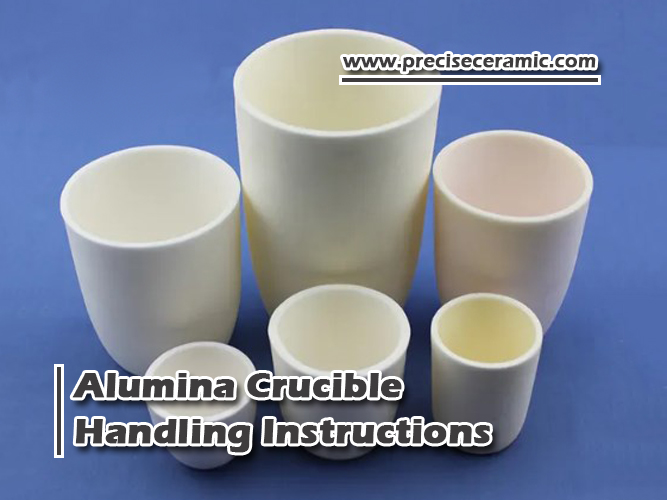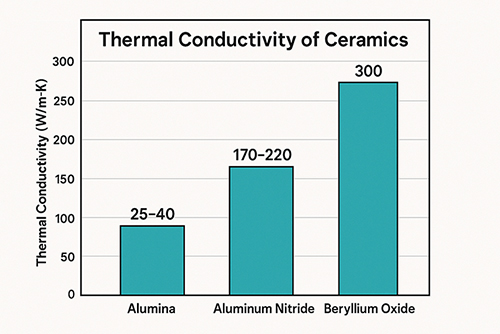Alumina Crucible Handling Instructions

Introduction
The alumina crucible is a laboratory device made from aluminum oxide. Because of good resistance to thermal shock and high mechanical strength, these crucibles found applications in the evaporation process of solutions, the firing process of solids, etc.
Therefore, this article offers detailed handling instructions for alumina crucibles to prolong their service life and avoid possible safety hazards.

Figure 1 Alumina Crucibles
1. Checking and Installment Before Use
1.1 Check the Crucible You Received.
Take care of your crucible before first use.
We are quite sure that the crucibles we provide are of high quality because they have undergone strict quality control and are stored and packed appropriately. However, occasional damage happens during shipping. Please check your crucible to see if there is any crack. Contact us to replace damaged crucibles.
1.2 Install Alumina Crucibles Correctly.
There are several tips for your installment.
- First, leave adequate space between the crucible and the furnace in case cracks appear, and remember to keep over 25 mm distance from heating elements.
- Second, leave alumina crucibles in dry surroundings. Dry them naturally and slowly if they get wet.
2. Basic Operation Guides
Follow the basic operation guides below to reduce crucible failures.
- Pick up crucibles with tongs and gloves.
- Place the hot crucible on the clay triangle to avoid any thermal shock. A clay triangle supports crucibles, and it is heated over a Bunsen burner.
- Make sure that the alumina crucible sits in the middle of the clay triangle in case it falls over.
- Ignite the Bunsen burner flame and start heating consequently.
3. Precautions for the Crucible’s Usage
3.1 Prevent Your Crucible from Thermal Shock.
Handle your alumina crucible carefully as your crucible container stands very high temperatures.
- Large alumina crucibles need to be preheated to avoid cracking due to the sudden change in temperature. Placing an alumina substrate under the crucible can also reduce the risk. A heating rate of 150°C/ hr is recommended for even heating.
- The following heating and cooling down processes should also be carried out slowly.
- Keep a close watch on the temperature of your crucible. Do Not exceed the maximum temperature limit (as for the alumina crucible, the temperature is about 1750 °C), or your crucible will be damaged.
3.2 Do Not Put Unsuitable Material in Alumina Crucibles.
Some substance is not allowed to be put inside the crucible.
- Do Not put compounds of bismuth, lead, silicon, tin, antimony, and rare earth inside because these materials react with alumina and form eutectic.
- Do Not put too many materials in your alumina crucible to avoid potential uneven heating.
- Never fill the crucible with cold metals, which are likely to expand and cause the crucible to crack.
4. Cleaning and Storage After Use
4.1 Clean Your Crucible Every Time After Use.
Daily cleaning and careful storage are required for maintenance.
You can boil alumina crucibles with diluted hydrochloric in everyday cleaning. In this way, the purity and high-temperature resistance of alumina crucibles could be kept.
Related reading: Lab Tips: How to Use and Clean Crucibles?
4.2 Store the Crucible Properly.
Care for the fragile alumina crucibles.
- Always store them in a dry environment at temperatures above 0°C.
- Do not use cold or wet crucibles.
- Never stack crucibles inside one another to prevent cracking.
- Never roll the crucible. Although they are in round shape, the rolling might damage the protective glaze and even the inside layers.
Conclusion
This article discusses the handling, operating, and maintenance of alumina crucibles. Hope that you can have a better understanding of how to take care of these crucibles. Advanced Ceramic Materials (ACM) provides alumina crucibles of different sizes. We also welcome customized Al2O3 products. Send us an inquiry if you are interested.
{{item.content}}
LEVE A REPLY
{{item.children[0].content}}
{{item.content}}
LEAVE A REPLY
SUBSCRIBE OUR NEWSLETTER
- Boron Nitride in Cosmetics: Enhancing Performance and Sensory Appeal
- Maximize MOCVD Yield and Purity with Hexagonal Boron Nitride Setters
- What Are the Advantages and Uses of Boron Nitride Ceramic Sheet?
- The Compression Annealing Advantage for Pyrolytic Boron Nitride
- Beyond Insulation: The Surprising Spectrum of Ceramic Thermal Conductivity











